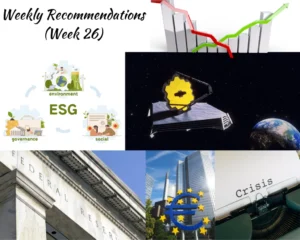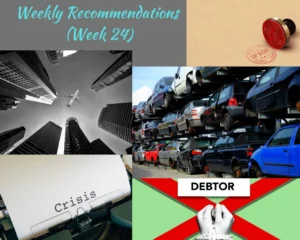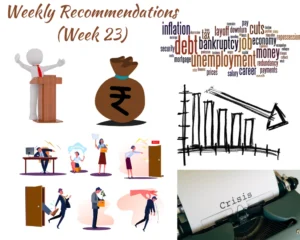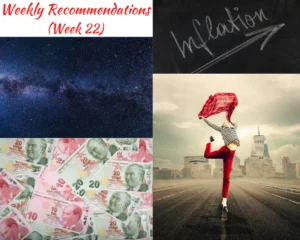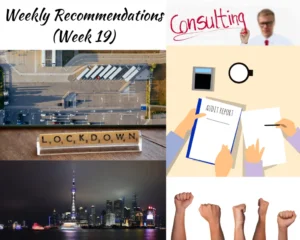This is the twenty-fifth edition of weekly recommendations. Watch this space for facts, news, trivia and research around the world. Topics range from economics, public policy and psychology to finance, society and current affairs. Access all weekly recommendations here.

Bringing Verandahs Back in Life
Verandahs are unique transitional places between the street and the house. Pritzker laureate B V Doshi describes verandas as “the meeting place between the sacred and profane; the house and the street”.
These are the transitional spaces that are semi-public or semi-private. They received special attention every morning and especially during festivals. Ankita Gattupalli writes in Arch Daily about how verandahs served a vital bridge between private and public life. She argues that with modernisation and urbanisation, concepts of privacy and socialising have changed and with that change, architectural structures in modern India, too have changed.
Nowadays, the interlinking space between the street and the house has been shortened and restricted for transactional purposes only. It has also changed how we communicate with people living around us.
She feels that bringing back the veranda cannot bring communities together. She concludes, “What architects can take forward is not a transitional space, but a transitional place that can nurture community, invite lingering, and hold the character of the mystical in-between.”
Risk of Another Housing Bubble Brewing
Last week, we read about a possible bubble in the second-hand auto industry in the US. This week I came across an article published on the Economic Collapse blog regarding a housing bubble in the US.
The article highlights how different institutions are worried about high property prices and increase in inventory. During the course of the pandemic, home prices in the US rose 37% between March 2020 and March 2022. However, incomes have not increased at that level. Home prices have gone up four times faster than incomes.
Another reason for the bubble is the rise in mortgage interest rates – from 3.2% to 6% in the last six months.
Moody’s Analytics chief economist Mark Zandi said that home prices will see flat growth in most markets while in highly overvalued markets such as Boise (Idaho) and Phoenix (Arizona), the prices may drop by 5-10%. If a recession hits, then US property prices would drop further by 5-10% in general.
The answers to why we reached here are – ultra dovish monetary policies post-Covid that pulled interest rates at very low levels and white-collar professionals moving out to different locations owing to work-from-home and remote working opportunities.
Many economists believe this to be a bubble. But will it be like we witnessed in 2008? There’s no consensus. Policymakers should, therefore, be aware of these developments.
Difficulties for Foreign Insurers in Malaysia
Malaysian insurance space will not be the same for foreign insurers. Many foreign insurance companies will have to dilute their stakes below 70% for complying with the regulations. Bloomberg reported, “Foreign insurers that do not comply with the ownership limit by the deadline will have to pay into a national health insurance program known as B40 Health Protection Fund.”
The foreign ownership limit for Malaysian insurers was set at 70% in 2009 under the financial liberalisation policy. Higher foreign shareholdings were accorded on a case-by-case basis.
The report stated that insurance companies that contribute to the B40 fund will be deemed to have complied with the ownership limit. AIA Group Ltd., Prudential Plc, Tokio Marine Holdings Inc. and Zurich Insurance Group AG are among the international insurers with ventures in the Southeast Asian nation.
Fall of Rupee | Interview
Although most of us would not treat the depreciation of the rupee as a good event, for me it was the start of something new.
Recently, I started a Marathi podcast and this week I have climbed a major step. In episodes 28, 29 and 30 of ‘econGully Marathi Podcast’, I spoke on this topic with the very first guest of the podcast – Sushant Hede, CA and economist (Ex-CARE), who is currently pursuing PhD in economics. We discussed how currency markets function and why the rupee has been depreciating recently. I guess for the first time in Marathi media, we touched on topics such as capital flight risks, the role of RBI, Impossible Trinity and REER.
In a nutshell, we arrived at these conclusions – The appreciating dollar is more worrying that has led to the falling of many currencies, including the rupee. A hawkish turn from the Fed and Russia-Ukraine war are the main reasons why we see the rupee depreciation. And if we look at the REER, we can see the rupee is in much better shape than other emerging markets. In the short run, more depreciation risks will prevail but strong forex reserves and recent measures to increase dollar supply will help arrest depreciation in the medium to long term.
If you understand Marathi, listen to this 3-part interview on your favourite podcasting app and share it with your family, friends and colleagues. Links to Part 1 of the podcast – Spotify, Apple Podcasts, Google Podcasts, Jio Saavn, Amazon Music, Gaana and Stitcher. Second and third part will get displayed on your app as soon as you finish listening to the first part. Hope you like it. Feedback in the comments below. Thank you!
– Swapnil Karkare



